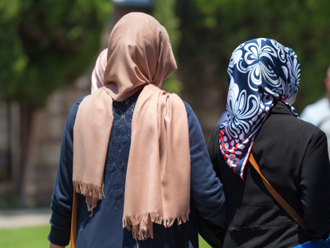
My sister was not yet 18 when she was married off. She hailed from one of the most literate regions in South Asia, Kerala. And her parents were literary figures.
Both of which go to show perhaps that literacy may not always be the deciding factor for adhering to painful customs. My sister’s marriage took place decades ago, and it has continued to stay in place. If you asked her now, she might tell you, had she had a job then, and was grown up enough to think for herself; her choice of a life partner just might have been different.
Roughly that’s the reasoning behind India’s Supreme Court’s judgement last week that said sexual intercourse by a man with his wife, who is below 18 years of age, is rape, and therefore a criminal act. According to a United Nations report, India, has the second highest number of child marriages in the world, just behind Bangladesh.
The court was critical of the government for trying to “somehow legitimise” the exception clause. What’s the exception clause? In the case at hand, Independent Thought vs Union of India, the Central Government had told the Supreme Court that it stands by Exception 2 of Section 375 of the Indian Penal Code (IPC) to provide protection to the husband, his minor wife and the sanctity of their conjugal relationship.
Independent Thought, a non-governmental organisation, in a petition in 2013, had challenged Exception 2, which states that sexual intercourse by a man with his own wife, the wife not being under 15 years of age, is not rape.
Contrary to the popular perception in India and abroad, more Hindus than Muslims prefer their daughters to be married of before the age of 18, when a girl can be legally considered an adult. Nearly 12 million Indian children were married off in 2015, 84 per cent of them Hindu and 11 per cent Muslim, according to an IndiaSpend analysis. That, the analysis adds, is a number equivalent to the Jammu & Kashmir’s population.
One reason for girl child marriages is that a girl is customarily considered a financial burden, which explains why female infanticide is a problem in India despite strict laws in place. Another major reason is the abiding patriarchal fear that girls would be led “astray” as the years went by and that their “market” value would diminish. That patriarchy is itself responsible for the commodification of girls is not seen as much of a contradiction here.
Research shows that child marriage limits girls’ education, leads to early and more frequent childbirths and puts girls at a greater risk of experiencing violence, and other negative health outcomes, such as pregnancy-related complications or sexually-transmitted diseases.
It’s in this context that the latest Supreme Court judgement must be understood: “Almost every statute in India recognises that a girl below 18 years of age is a child and it is for this reason that the law penalises sexual intercourse with a girl who is below 18 years of age. Unfortunately, by virtue of Exception 2 to Section 375 of the IPC, if a girl child between 15 and 18 years of age is married, her husband can have non-consensual sexual intercourse with her, without being penalised under the IPC, only because she is married to him and for no other reason,” the court said.
It’s a matter of some serious irony that the court’s position on the rights of the girl child, and that sex in marriage with a girl under 18 be construed as rape, are in direct opposition to the government’s stance, which is that marriage is license in disguise for sex with minors.
The government had rather inexplicably urged the court not to tamper with the “exception clause” as it was introduced keeping in view the age-old traditions and evolving social norms. The government had argued that the “practice of child marriage cannot be wished away and that the legislature is best off not criminalising the consummation of such child marriages,” which though outlawed in principle in 1929, has survived like a mutant social disease over the decades.
While the apex court judgement will anger communities, especially in the states of Rajasthan and Bihar that lead India in child marriages, this is one of the most proactive rulings by the Indian judiciary.
Nevertheless, the judgement has maintained a mysterious silence on marital rape of a women over 18. According to a newspaper survey, close to 11 per cent of all married women are subject to forced sex by their husbands. Several cases are pending before the court to decree non-consensual nuptial sex a criminal act. Here too the government has been erring on the conservative side saying, criminalising non-consensual sex may be misused and that it could lead to the undermining of the institution of marriage.
There might be a perverse grain of truth in this: Statistics show that only 1 out of 100 Indian marriages end up in a divorce, which is quite low in comparison to America’s 50 per cent of marriages turning into break-ups. But this flattering figure may not be a true indicator of nuptial bliss. Indians in general still consider marriage a sacrament, as do Catholics.
With last Wednesday’s judgement, India in effect has criminalised sex with minor girls in marriage as rape; but forced sex by husbands with their elder sisters is still not.
But then again in India, one is used to surviving — after a fashion — extreme paradoxes.
C.P. Surendran is a senior editor, columnist and novelist based in India.









